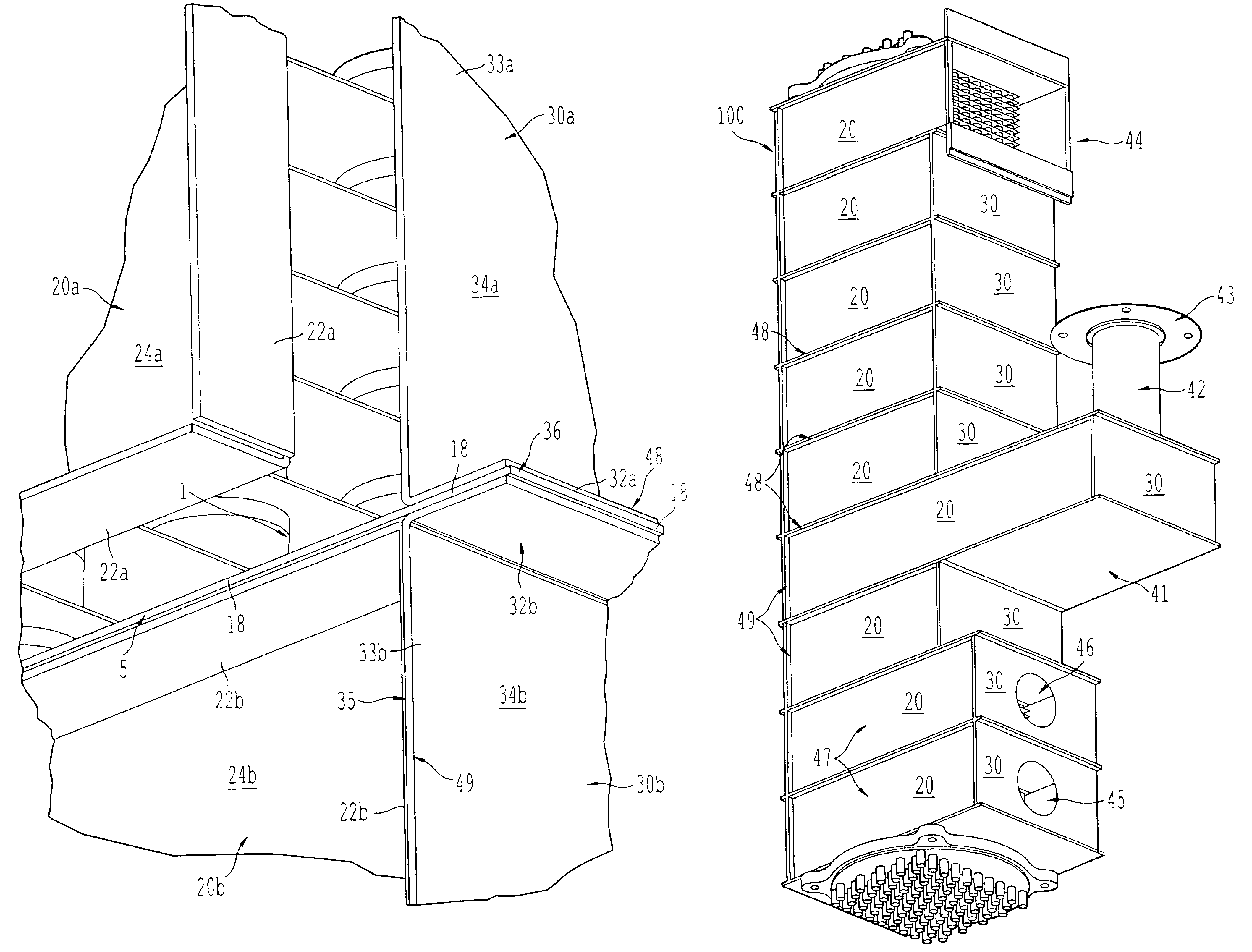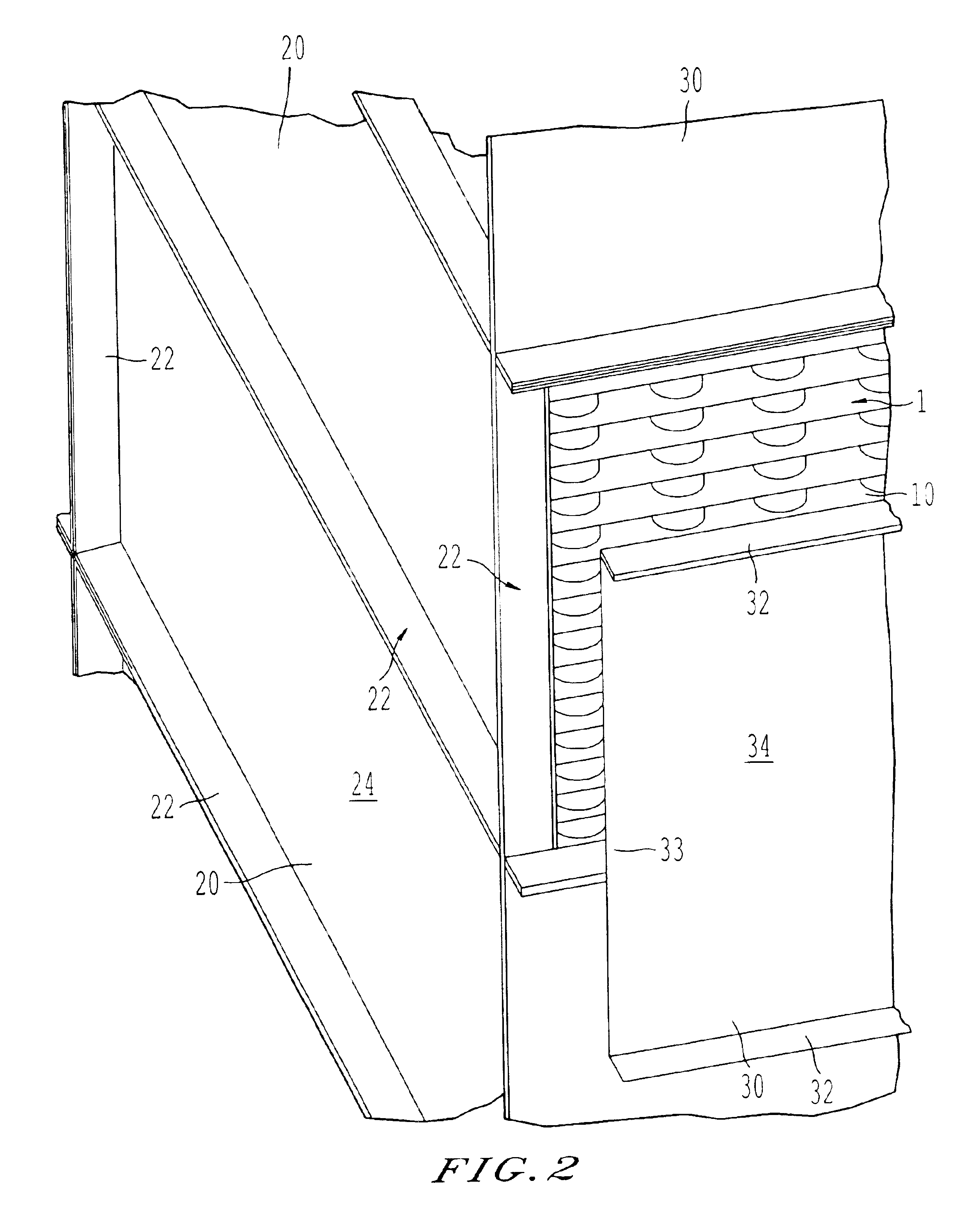Heat exchanger housing and seals
a technology of heat exchanger and housing, applied in the field of heat exchangers, can solve the problems of reducing the compactness and cost-effectiveness of the heat exchanger, limiting the design thermal performance significantly, and using such configurations exacerbates the problem of flow bypassing in the tube and shell heat exchangers
- Summary
- Abstract
- Description
- Claims
- Application Information
AI Technical Summary
Benefits of technology
Problems solved by technology
Method used
Image
Examples
Embodiment Construction
[0022]Embodiments of the present invention will be described hereinafter with reference to the accompanying drawings. In the following description, the constituent elements having substantially the same function and arrangement are denoted by the same reference numerals, and repetitive descriptions will be made only when necessary.
[0023]FIG. 1 shows a tubular heat exchanger core including an array of substantially-parallel conduits or tubes 2, which are sealingly connected between a first tubesheet 3 and a second tubesheet 4. A first fluid flows from an inlet manifold sealingly attached to the first tubesheet 3, through tubes of the array of tubes 2, and out a second manifold attached to the second tubesheet 4. The manifolds are not shown here for the sake of clarity. The array of tubes 2 is provided on outer surfaces of the tubes with flow directing baffles or plates 5, which are used to cause a second fluid to flow substantially normal to the axis of the array of tubes 2. One or m...
PUM
 Login to View More
Login to View More Abstract
Description
Claims
Application Information
 Login to View More
Login to View More - R&D
- Intellectual Property
- Life Sciences
- Materials
- Tech Scout
- Unparalleled Data Quality
- Higher Quality Content
- 60% Fewer Hallucinations
Browse by: Latest US Patents, China's latest patents, Technical Efficacy Thesaurus, Application Domain, Technology Topic, Popular Technical Reports.
© 2025 PatSnap. All rights reserved.Legal|Privacy policy|Modern Slavery Act Transparency Statement|Sitemap|About US| Contact US: help@patsnap.com



